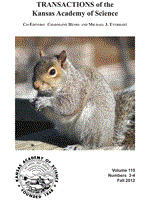Fossil Crow shark teeth, extinct genus Squalicorax, are widespread and are reported from the Late Cretaceous of Europe, northern Africa and North America. In the spring of 2011 a fossil tooth of Squalicorax kaupi was discovered in glacial debris of north-central Missouri. The tooth is fairly worn. It is about 1.5 cm tall and 1.6 cm at its widest point. Both cutting edges show evidence of heavy serrations though they are preserved well only at the distal notch. Portions of the enamel are missing and the broken edges are worn smooth. There are two likely sources for the fossil shark tooth of this study. It could have arrived in Missouri by fluvial and glacial movements from formations of the Western Interior Seaway of Kansas, Nebraska or Iowa or from the north northwest by glacial movements from the Hudson Seaway. There are no marine deposits of the Late Cretaceous in this part of Missouri, but Late Cretaceous marine formations and fossils are abundant from Kansas and Nebraska and lesser so from Iowa.
How to translate text using browser tools
1 May 2013
A Cretaceous Shark Tooth in Glacial Debris of Middle Missouri
Dan R. Elliott,
Lisa B. Whitenack
ACCESS THE FULL ARTICLE
Anacoracidae
crow shark
fossil shark tooth
Hudson Seaway
Late Cretaceous
Squalicorax
Western Interior Seaway





